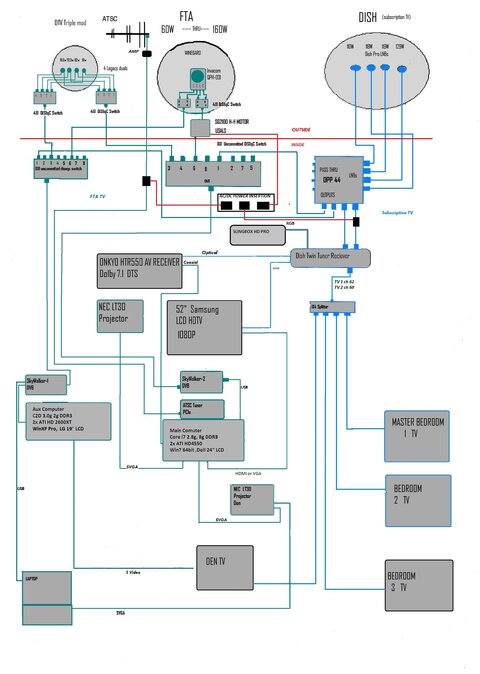Which coax cable I need to chose between RG6 (marked digital for satellite) and RG6 Quad?
Does the longer cable makes significant difference in quality of the signal?
Will I see a difference in a signal quality between 50' and 75' coax cables?
The QUAD shield cable is usually only required if you are routing the cable near other electronics and power cables that might induce interference. The extra shielding provides better immunity to electromagnetic interference. There isn't normally any other advantage and the QUAD shielded cable costs more. You don't need to use this unless you get a super fantastic deal on the cable by some quirk. QUAD shield cable won't typically assist with cable length issues unless you consider other design parameters involved, but these parameters have nothing to do with whether it is QUAD shielded or not.
If there is a cable length issue, you either use better RG6 cable or jump up to RG11 cable or start applying signal conditioners or line amplifiers.
You will not have any troubles if you are 100 feet or less, you can probably go much further than that, possibly up to 200-225 feet with a good quality RG6 cable.
There is a difference between signal QUALITY and signal LEVEL, but they are inter-related. You won't see a diminishment in signal QUALITY due to the length of your cable unless you lose your signal LEVEL. Losing your signal LEVEL does not mean that it has to be totally absent. It just has to be so low that the tuner won't recognize it any longer.
As you increase your cable length, your signal LEVEL is going to decrease in an analoguous slope. Once the signal LEVEL becomes so low that the receiver can no longer use it, then the signal quality will drop off abruptly from a good reading to nothing at all.
Before you get to the point where you lose your signal QUALITY, you will notice other problems first. You will have trouble switching the internal switch of the LNBF from vertical to horizontal polarity. If you have an external DiSEqC switch to select between several LNBFs, it may hesitate or fail to switch between them and if you are using a motor, it may drive slowly or fail to drive to a new position entirely.
This explanation is very brief. There is a lot more involved than just this, but it should answer your most immediate question.
RADAR


